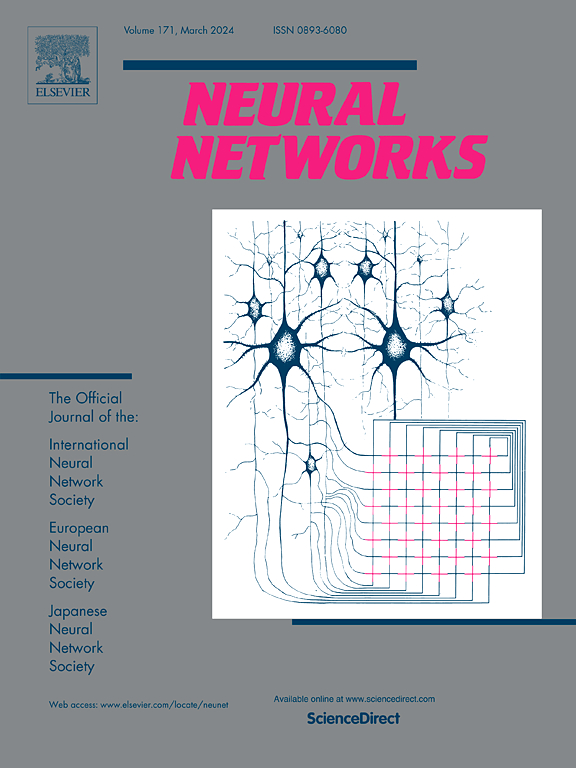Multi-scale graph harmonies: Unleashing U-Net’s potential for medical image segmentation through contrastive learning
IF 6.3
1区 计算机科学
Q1 COMPUTER SCIENCE, ARTIFICIAL INTELLIGENCE
引用次数: 0
Abstract
Medical image segmentation is essential for accurately representing tissues and organs in scans, improving diagnosis, guiding treatment, enabling quantitative analysis, and advancing AI-assisted healthcare. Organs and lesion areas in medical images have complex geometries and spatial relationships. Due to variations in the size and location of lesion areas, automatic segmentation faces significant challenges. While Convolutional Neural Networks (CNNs) and Transformers have proven effective in segmentation task, they still possess inherent limitations. Because these models treat images as regular grids or sequences of patches, they struggle to learn the geometric features of an image, which are essential for capturing irregularities and subtle details. In this paper we propose a novel segmentation model, MSGH, which utilizes Graph Neural Network (GNN) to fully exploit geometric representation for guiding image segmentation. In MSGH, we combine multi-scale features from Pyramid Feature and Graph Feature branches to facilitate information exchange across different networks. We also leverage graph contrastive representation learning to extract features through self-supervised learning to mitigate the impact of category imbalance in medical images. Moreover, we optimize the decoder by integrating Transformer to enhance the model’s capability in restoring the intricate image details feature. We conducted a comprehensive experimental study on ACDC, Synapse and BraTS datasets to validate the effectiveness and efficiency of MSGH. Our method achieved an improvement of 2.56–13.41%, 1.04–5.11% and 1.77–3.35% of dice on the three segmentation tasks respectively. The results demonstrate that our model consistently performs well compared with state-of-the-art models. The source code is accessible at https://github.com/Dorothywujie/MSGH.
多尺度图形和谐:通过对比学习释放 U-Net 在医学图像分割方面的潜力
医学图像分割对于准确呈现扫描图像中的组织和器官、改进诊断、指导治疗、实现定量分析以及推进人工智能辅助医疗至关重要。医学图像中的器官和病变区域具有复杂的几何形状和空间关系。由于病变区域的大小和位置各不相同,自动分割面临着巨大的挑战。虽然卷积神经网络(CNN)和变换器已被证明能有效地完成分割任务,但它们仍然存在固有的局限性。由于这些模型将图像视为规则的网格或斑块序列,因此它们难以学习图像的几何特征,而这些特征对于捕捉不规则和微妙的细节至关重要。在本文中,我们提出了一种新型分割模型 MSGH,它利用图神经网络 (GNN) 充分利用几何表示法来指导图像分割。在 MSGH 中,我们结合了来自金字塔特征和图形特征分支的多尺度特征,以促进不同网络间的信息交换。我们还利用图形对比表示学习,通过自我监督学习提取特征,以减轻医学图像中类别不平衡的影响。此外,我们还通过集成变换器来优化解码器,以增强模型还原复杂图像细节特征的能力。我们在 ACDC、Synapse 和 BraTS 数据集上进行了全面的实验研究,以验证 MSGH 的有效性和效率。我们的方法在这三个分割任务上分别取得了 2.56%-13.41%、1.04%-5.11% 和 1.77%-3.35% 的骰子改进。结果表明,与最先进的模型相比,我们的模型始终表现出色。源代码请访问 https://github.com/Dorothywujie/MSGH。
本文章由计算机程序翻译,如有差异,请以英文原文为准。
求助全文
约1分钟内获得全文
求助全文
来源期刊

Neural Networks
工程技术-计算机:人工智能
CiteScore
13.90
自引率
7.70%
发文量
425
审稿时长
67 days
期刊介绍:
Neural Networks is a platform that aims to foster an international community of scholars and practitioners interested in neural networks, deep learning, and other approaches to artificial intelligence and machine learning. Our journal invites submissions covering various aspects of neural networks research, from computational neuroscience and cognitive modeling to mathematical analyses and engineering applications. By providing a forum for interdisciplinary discussions between biology and technology, we aim to encourage the development of biologically-inspired artificial intelligence.
 求助内容:
求助内容: 应助结果提醒方式:
应助结果提醒方式:


